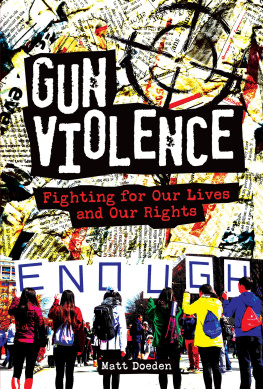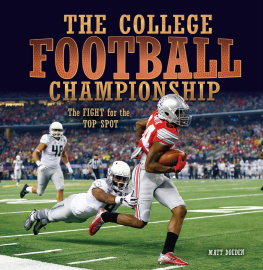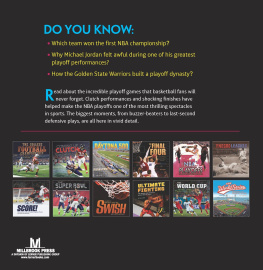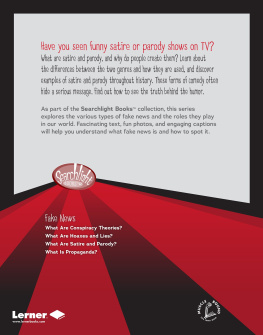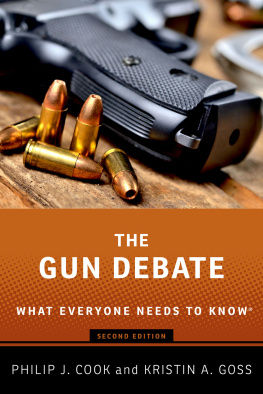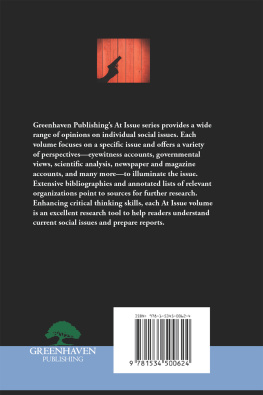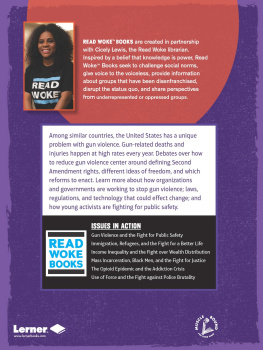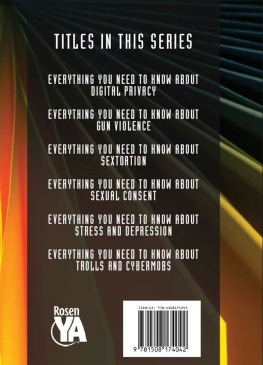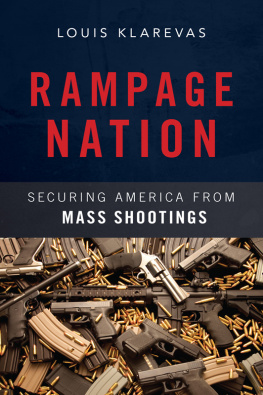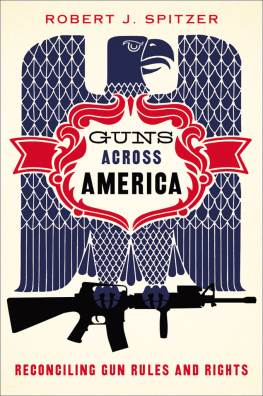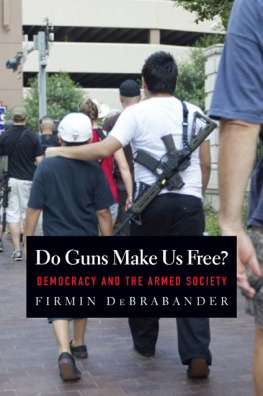Copyright 2020 by Lerner Publishing Group, Inc.
All rights reserved. International copyright secured. No part of this book may be reproduced, stored in a retrieval system, or transmitted in any form or by any meanselectronic, mechanical, photocopying, recording, or otherwisewithout the prior written permission of Lerner Publishing Group, Inc., except for the inclusion of brief quotations in an acknowledged review.
Twenty-First Century Books
An imprint of Lerner Publishing Group, Inc.
241 First Avenue North
Minneapolis, MN 55401 USA
For reading levels and more information, look up this title at www.lernerbooks.com .
Main body text set in ITC Franklin Gothic Std.
Typeface provided by International Typeface Corporation.
Library of Congress Cataloging-in-Publication Data
Names: Doeden, Matt, author.
Title: Gun violence : fighting for our lives and our rights / Matt Doeden.
Description: Minneapolis : Twenty-First Century Books, [2020] | Includes bibliographical references and index. |
Identifiers: LCCN 2018054712 (print) | LCCN 2018060128 (ebook) | ISBN 781541562677 (eb pdf) | ISBN 781541555549 (lb : alk. paper)
Subjects: LCSH: Gun controlUnited States. | Firearms ownershipUnited States. | FirearmsLaw and legislationUnited States.
Classification: LCC HV7436 (ebook) | LCC HV7436 .D643 2020 (print) | DDC 363.330973dc23
LC record available at https://lccn.loc.gov/2018054712
Manufactured in the United States of America
1-46009-42926-3/12/2019
Contents
Chapter 1
March for Our Lives
Chapter 2
The History of US Gun Rights
Chapter 3
A Question of Safety
Chapter 4
Who Should Own Guns?
Chapter 5
Are All Firearms Created Equal?
Chapter 6
Measures of Control
Chapter 1
March for Our Lives
M archers filled the streets of Washington, DC, on March 24, 2018. Tens of thousands of peoplemostly teenagerscarried signs and chanted as they walked along Pennsylvania Avenue. The mass of protesters stretched along the avenue from the US Capitol to the White House and beyond. They were part of one of the largest protests in the United States since the Vietnam War (19571975). A little more than a month before the march, on February 14, a lone shooter had entered Marjory Stoneman Douglas High School in Parkland, Florida. In just over six minutes, the nineteen-year-old shooter (a former student at the school) killed seventeen people and wounded many more. He did so with an assault rifle that he had purchased legally under US and Florida gun laws. The March for Our Lives was a response to gun violence, especially to this and other school shootings. The students, as well as many adult allies, were there to send a message to politicians.
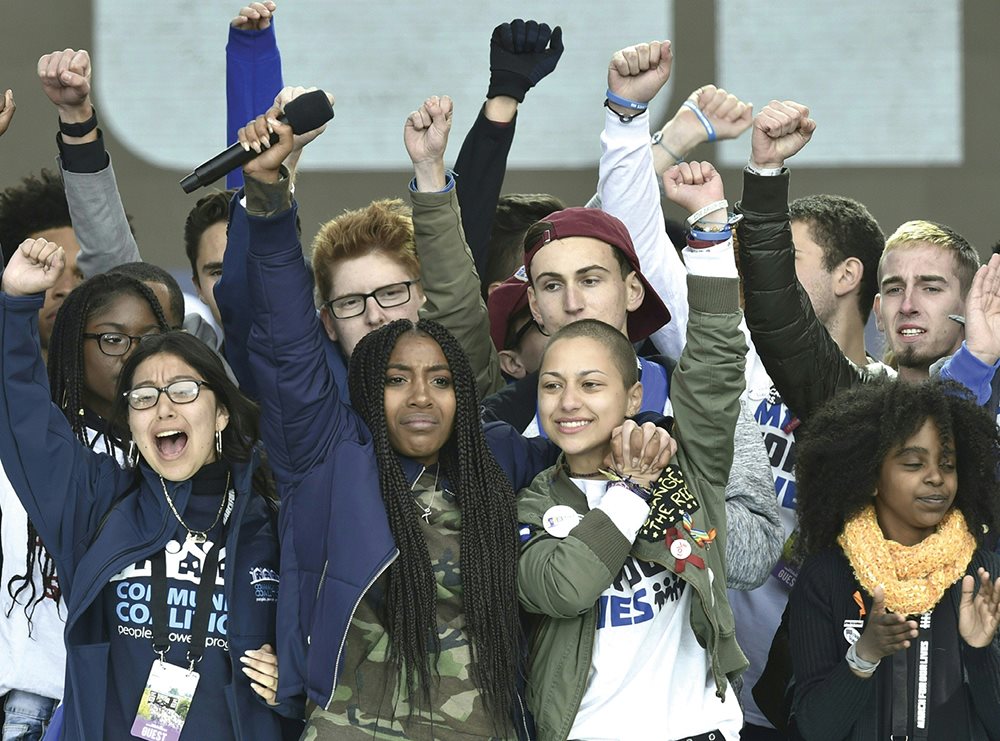
Emma Gonzlez ( center ) and others organized the March for Our Lives event in Washington, DC, in March 2018.
The protest march was mirrored in cities around the nation and the globe. In New York, young people dressed in orangethe color hunters wear for visibilityand marched through Central Park. Columbine, Colorado, was the site of another high-profile protest. The first major school shooting in the United States occurred in Columbine. Students gathered on a soccer field to release balloons in memory of shooting victims. In Paris, France, marchers chanted, Hey hey, ho ho, gun violence has got to go!
School shootings and other mass shootings have become an epidemic in the United States. According to the advocacy group Everytown for Gun Safety, the violence at Marjory Stoneman Douglas was the fifty-eighth school shooting in the United States since 2014. For the Parkland students, enough was enough. Fresh from the pain of losing friends, they took a high-profile stand against gun violence. People around the world rallied to their cause. The March for Our Lives event was the culmination of the students earliest efforts to organize. They directed their anger and message at US lawmakers. The message also was aimed at powerful organizations such as the National Rifle Association (NRA) that oppose most gun-control measures.
If you listen real close, you can hear the people in power shaking, said David Hogg, one of the students who had survived the Parkland shooting. He spoke to the crowd gathered outside the Capitol Building in Washington, DC. Were going to take this to every election, to every state and every city. Were going to make sure the best people get in our elections to run, not as politicians but as Americans.
Nine-year-old Yolanda Renee King, the granddaughter of civil rights leader Martin Luther King Jr., spoke at the Capitol too. I have a dream that enough is enough, she said, mirroring the famous words of her grandfather more than half a century earlier. That this should be a gun-free world. Period.
The marchers enjoyed a groundswell of support and media coverage. Yet not all Americans agree with their message. Opponents believe strongly that the right to bear arms is an important and cherished guarantee of the US Constitutions Bill of Rights as spelled out in the Second Amendment. These Americans feel that government should not limit gun rights at all, or if it does, only minimally. A handful of marchers turned out to oppose the March for Our Lives protests to spread their own message. In Salt Lake City, Utah, for example, marchers waved flags and carried pistols. In Utah the law allows people to carry firearms openly and concealed, as long as they have a permit and meet other requirements to do so. One marcher carried a sign that read, What can we do to stop mass shootings? SHOOT BACK.
The Parkland incident rekindled a debate that has raged for decades in the United States. Should anyone be able to own powerful firearms, or should government limit gun rights? Are guns a danger to society, or do they protect us from criminals and help guarantee freedom for all?
Teens mourn at a vigil after the 2018 Parkland shooting in Florida. The shooting brought teens to the forefront of the effort to enhance gun regulation in the United States.
The Right to Keep and Bear Arms
Gun control is a complex and hotly debated issue in the United States. The Second Amendment is part of the US Constitution, a document that defines the basic principles and laws of the United States. This amendment guarantees the American people the right to keep and bear arms. But what does this really mean? What did the founders intend when they wrote this guarantee more than two hundred years ago? And how does it apply to twenty-first-century society and high-tech weaponry that the nations founders could never have envisioned?
A gun in the wrong hands can be deadly. According to the US Department of Health and Human Services, about thirty thousand people die in the United States each year from gunshot wounds. This figure includes murders, suicides, and accidents. Proponents, or supporters, of gun control say that the issue is simple: More guns in society cause more gun-related deaths. They say that children, criminals, and people with serious mental illnesses shouldnt have easy access to guns. They believe that private citizens have no reason or need to own assault rifles and other high-powered weapons of war.

